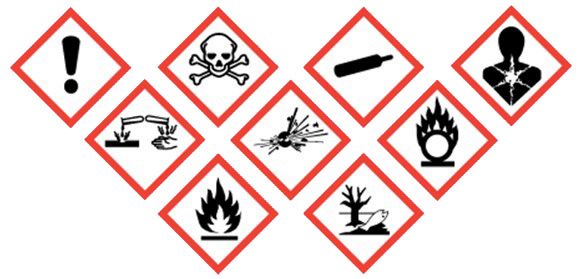What you need to know about
COVID-19 | Click here

What you need to know about
COVID-19 | Click here


Thursday June 2, 2022 12:17
WorkSafe, from time to time, reviews the published exposure levels for substances based on new or additional data for those substances. The most recent edition (12th edition) of the Workplace exposure standards and biological exposure indices was published in November 2020.
Changes in workplace exposure standards are designed to produce better health outcomes for workers as part of the WorkSafe strategic plan to reduce workplace related illnesses.
Earlier this year WorkSafe announced the review of the Workplace Exposure Standards (WES) for 34 substances and Biological Exposure Indices (BEI) of 1 substance. This review includes several substances that are commonly used in industry, including diesel fuel, toluene, trichloroethane, turpentine, methyl bromide and some glycols. They are also reviewing the WES for welding fumes. The BEI being reviewed is for lead.
The WorkSafe Workplace Exposure Standards are a set of concentrations of airborne substances which most workers can repeatedly be exposed to, day after day, without suffering any adverse health risks. The contaminants include dusts, aerosols, liquid mists, fumes, etc.
Exposure refers to when a worker is subjected to a hazardous chemical in the course of employment through any route of entry (inhalation, ingestion, skin contact or absorption, etc.), and includes potential, accidental or possible, exposure.
The terms used in workplace exposure standards are:
| WES |
Workplace Exposure Standard |
|---|---|
| TWA |
Time Weighted Average. This is the average airborne exposure in any 8-hour work shift of a 40-hour work week which shall not be exceeded. |
| STEL |
Short Term Excursion Limit. This is the maximum permitted exposure during a 15-minute period. The WES -TWA limit still has to be met. |
| Ceiling |
The maximum concentration of an airborne substance- either biological or chemical – that should never be exceeded under any circumstance. It is the maximum concentration to which a worker may be exposed to at any time without incurring the risk of adverse health effects. If no ceiling value is given, a good guide is 3 times the WES value. Exposure values are usually expressed as milligrams per cubic metre (mg/m3) and/or parts per million (ppm). |
| BEI |
Biological Exposure Index. Biological Exposure Indices are a measure of how much of a substance or its metabolites is taken up in body fluids such as blood or urine or even exhaled air. BEI is measured using biological monitoring through regular blood or urine sampling and the monitoring result is compared to the BEI established for the specific substance. |
| PES |
Prescribed Exposure Standard means a workplace exposure standard or a biological exposure index that has the purpose of protecting persons in a workplace from harm to health and that is prescribed in:
|
It’s important to note that the WES values for airborne contaminants are a guide only as each person will be slightly different and may react differently to the same level of exposure. While the objective should be that workers are not exposed to airborne contaminants, this is not always possible. For workers who are exposed to airborne substances in the workplace, the actual level of exposure should be kept as low as possible below the WES values. The aim should be for exposure levels to be no higher than 50% of WES or lower.
The exposure values or indices are primarily used for risk assessment. Sampling is used to measure the level of airborne contaminants (and their effect on workers) in the workplace. By comparing the sampling results to the WES levels one can determine whether workers are likely to be at risk. The appropriate mitigation controls can then be implemented.
The level of airborne contaminants is measured using air sampling and monitoring techniques. This is usually by:
When using a sampling system, the detection medium used in the sampling system must be matched to the substances the worker is exposed to. This may involve in using more than one sampling system. Dusts are usually done using a fine filter. Sampling should be undertaken by qualified persons.
If a worker is exposed to a substance for more than 8 hours, then the WES value must be adjusted to compensate for the additional time the worker is exposed, ie the WES value is reduced to take into account the longer exposure time.
Remember that every employer has a Duty of Care to not only provide a safe place of work but also ensuring that their workers do not suffer any harm while at work.
For airborne contaminants this can be achieved by:
If you have concerns around this topic, your Securo consultant is available to help and assist you, so please give them a call or alternatively, you can contact Securo head office on 0800 55 33 44.